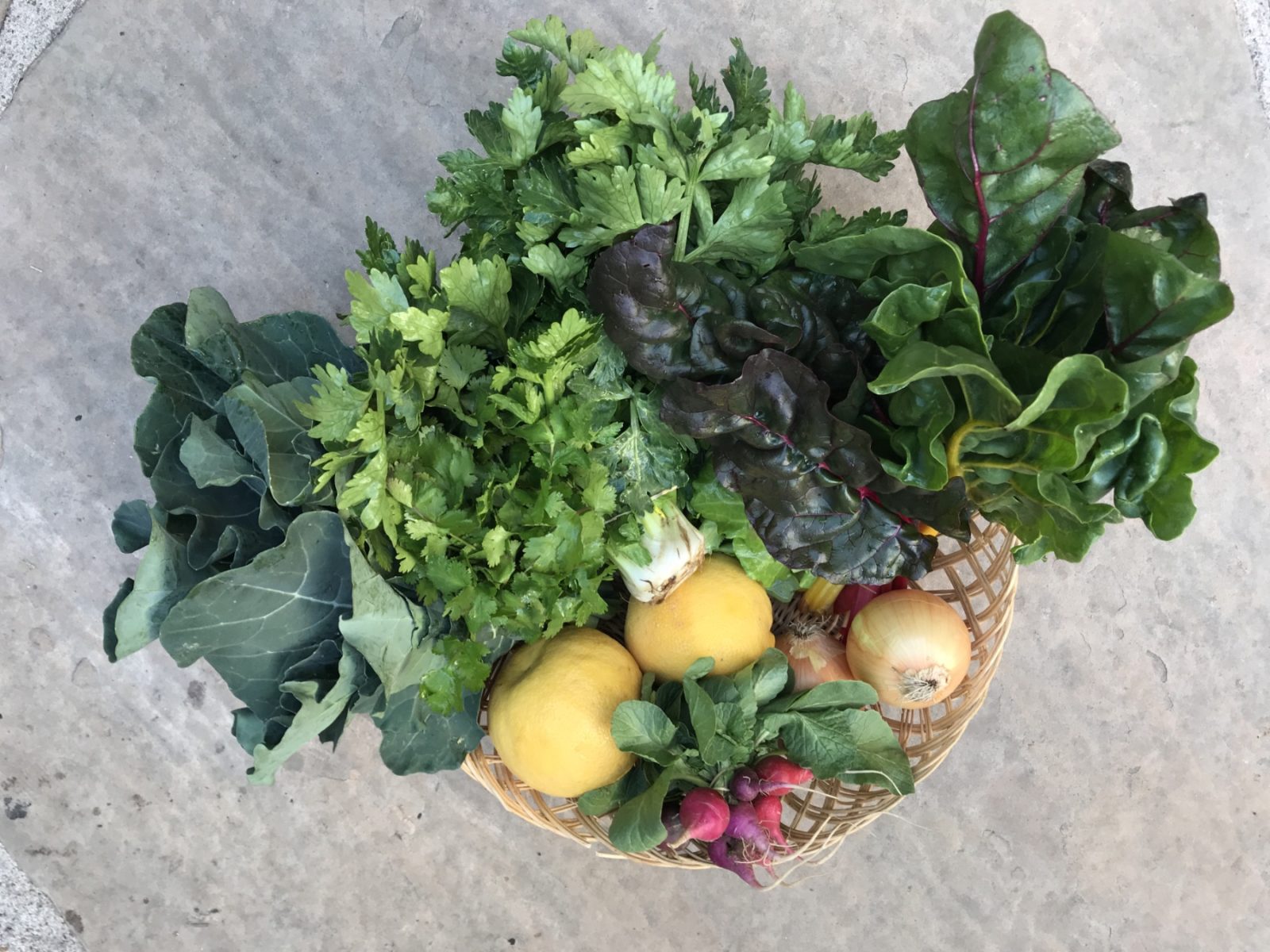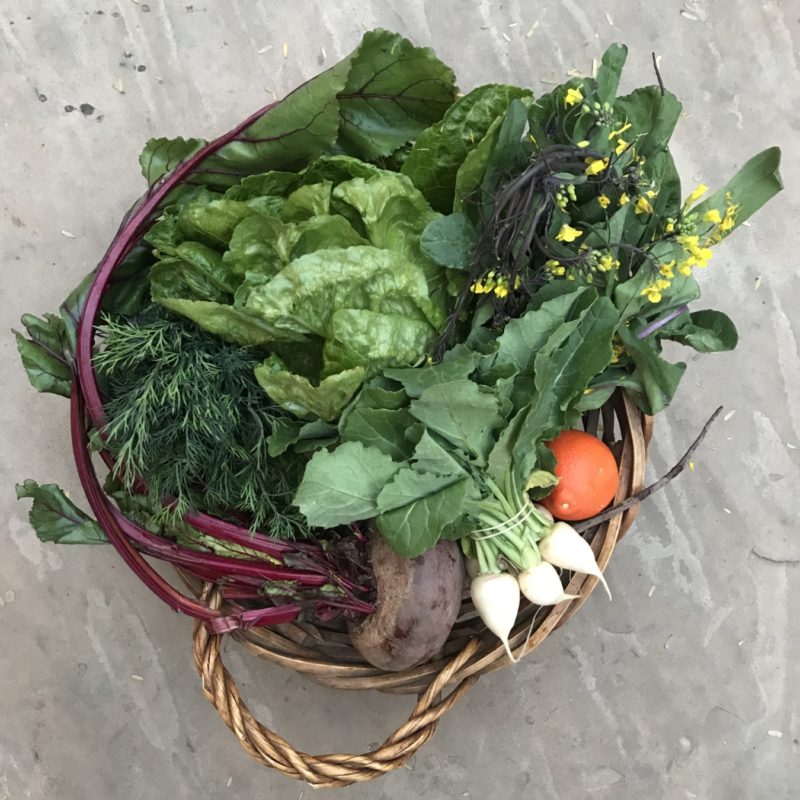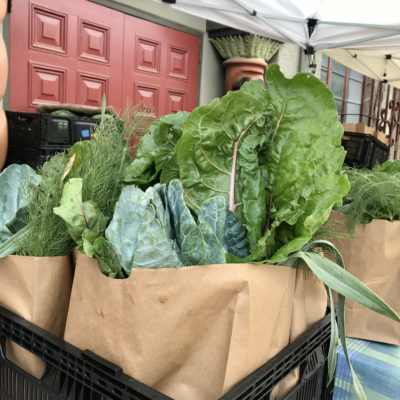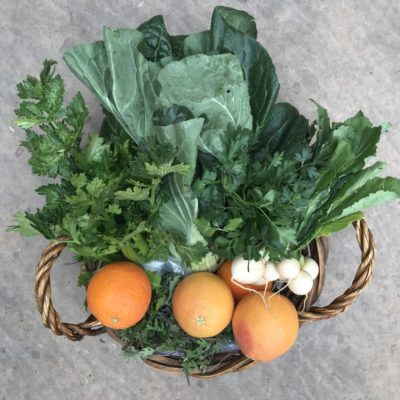About “Winter Greens”
Greens can dominate our winter CSA shares. We also get beets, turnips and radishes with their greens attached. If this sea of green is leaving you feeling overwhelmed already, don’t despair!! Cooking greens are used in all types of cuisine and you should have no trouble incorporating them into almost any dish, once you get the hang of it. Dark, leafy greens are among the most nutritious vegetables available. They are loaded with all sorts of vitamins and minerals and are important sources of iron, calcium and protein in a vegetarian diet. Adding greens to your breakfast, lunch or dinner is easy and you can even make chips for snacks or add them to smoothies and juices!

Storing: Keep in a plastic bag or wrapped in paper towels inside a plastic bag in the veggie drawer. Hardier greens like kale and collards will last much longer than more delicate varieties so try to prioritize which greens you will eat first. Separate greens from roots of beets, turnips and radishes to maintain the freshness of both.
To clean: Fill a large bowl or tub with cool water and completely submerge the greens you want to use. Swishing them around will get rid of dirt hidden in curly parts or along stems. Wash greens in batches if you are cleaning a lot of them.
Chopping: Many greens have a tender stem you can eat, even younger kale and collards might be tender but in general you will want to remove the tough stems from those greens. The easiest way to do that is to simply rip the leaves off the central rib, but you can also fold the greens in half lengthwise along the rib and cut it out from base to tip. To cut, lay the greens in a pile and roll them up into a tight bundle like a cigar and cut into shreds.
Varieties of greens: Mustard greens, turnip greens and arugula are relatively spicy greens that can sometimes be extremely pungent. The young leaves are good raw but the flavor intensifies with age and you will usually want to cook larger leaves. If you have an especially mustard-y bunch, blanching the leaves in boiling water, followed by a dunk in cold water, will remove some of the spice before you proceed with your recipe. Many recipes for mustard greens call for fatty cuts of pork to smooth out the flavor. Using cream, coconut milk, butter, cheese (or even mayonnaise!) will work equally well to mellow and meld the taste with the other ingredients in the dish. Strong spices such as ginger, chilies and curry mixes are good with these greens, too!
Hardy and thick leaved greens like kale and collard greens can be surprisingly mild in flavor in the winter but can tend towards bitterness in warmer seasons. Dandelion and escarole, while delicate in texture, usually have a much more pronounced bitter flavor. These greens are best in hearty, long cooking recipes like soups and stews, though they can be great quickly sauteed. They are perfect in tomato based dishes and cheese, butter and cream will help to mellow their bitterness. Also, you may want to add a dash of vinegar or squeeze of lemon to whatever you cook with these green, as the acid really balances the flavor. Winter squash or sweet potatoes and fresh or dried fruit can provide a complementary sweetness as well. With the right combination of sweet and tangy ingredients even strong tasting greens can make a good base for a salad. If you are planning to serve kale or collard greens in a raw dish, sprinkle chopped greens with salt and massage a bit for best results, like in this Bruised Kale Salad.
Many seed catalogs also have a selection of chois and other greens labelled generically as Asian Greens. These greens, like bok choi, tat tsoi, mizuna and Chinese cabbage vary in flavor but tend to have a relatively mild profile ranging from mustard to cabbage in taste. Many of them have thick, watery stems that should not be removed, but enjoyed along with the leaves. Since they are often milder than other types of greens, they are good in lighter dishes and broth based soups. Asian ingredients like miso, soy sauce, sesame oil, grated ginger, garlic and coconut milk are great flavors for these types of greens but work well with stronger flavored greens as well.
Basic Recipe Ideas
An easy cooking method for any side of greens is to toss clean and chopped still damp leaves into a hot, oiled skillet (along with garlic for the best flavor) and stir until wilted. Season with salt and pepper or soy sauce, a squeeze of lemon or dash of vinegar and serve! While a side of greens is good, they are easily incorporated into many main dish meals.
For breakfast, greens are delicious with eggs, add them to your omelet, quiche, or eggs benedict. And if you are a juice or smoothie fan toss a few leaves in with the other ingredients for a supercharged drink.
Greens are also delicious cooked with beans in a dish with a Southwestern, Italian, Indian or Caribbean flair, or mixed into a pilaf or risotto! Most pasta sauces can accommodate a handful or two of chopped greens and delicate varieties like arugula or mizuna are delicious tossed onto a pasta dish (or cooked pizza) at the last minute! You can blanch several batches of greens to reduce them in size and use them as a filling for lasagna, savory pies and enchiladas.



